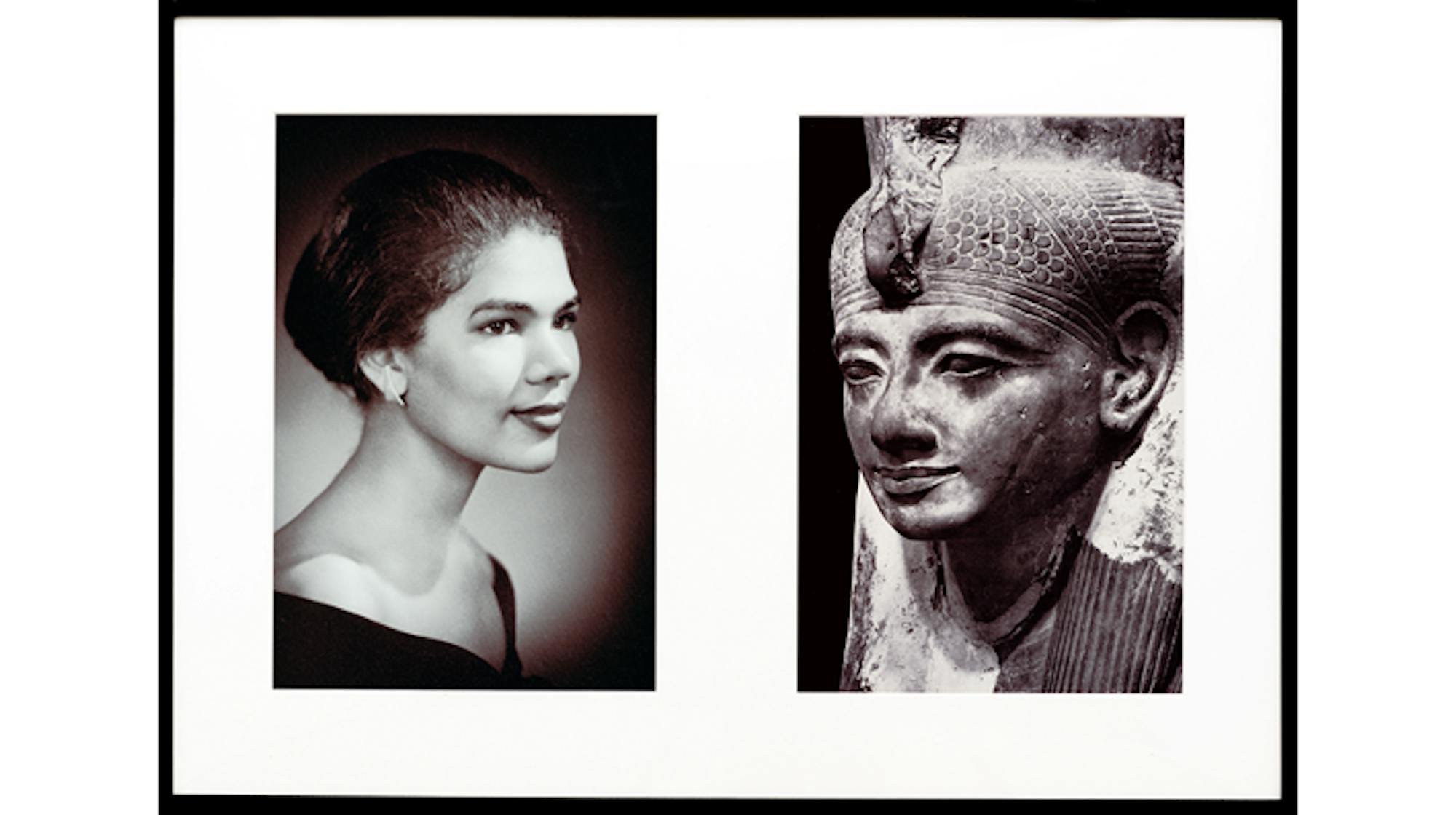The Museum of Fine Arts (MFA)’s current exhibition “Lorraine O’Grady: Family Gained” commemorates the museum’s acquisition of O’Grady’s work, “Miscegenated Family Album” (1980/1994). O’Grady currently lives in New York, but she was brought up in Boston. The artist calls her work "concept-based," and the MFA’s current show of “Miscegenated Family Album” consists entirely of photo collages. O’Grady’s work often deals with notions of hybridity and black subjectivity, both referenced in the work on display. The word “miscegenated” relates to the derogatory term “miscegenation,” which was used in U.S. law to ban inter-racial marriages until 1967.
The photo-series was inspired by a trip O’Grady took to Egypt in her 20s. She felt that for the first time in her life, she saw people depicted like her in art. O’Grady’s work directly addresses the lack of depictions of black people across all forms of media, and her work serves as a means to fill the void. Instead of looking to the present, O’Grady looks to the ancient past to find realistic visuals of black people and people of color. Equally importantly, these images are created by people of color.
As the MFA stated in their description of the exhibition, O'Grady's work reflects her perspective of ancient Egypt as "a 'bridge' country" between Africa and the Middle East. Many of ancient Egypt’s greatest treasures reside outside of Egypt due to mass plundering by Western archaeologists. Similar to the Elgin marbles from the Parthenon, these artifacts were seized by Westerners who believed that the country in which they resided did not have the resources or infrastructure to keep precious artifacts safe.“Miscegenated Family Album” is a result of, as well as a commentary on, that history. Ancient Egypt is a historical center of cross-cultural exchange, and the violence of colonialism against both individuals and entire cultures has left an indelible mark on the Egyptian culture that exists today. O’Grady’s work appropriates that hybridity similar to how she appropriates the term 'miscegenated,' and shows mixed-race people as empowered individuals by linking them directly to Egyptian monarchs of an ancient past. Her work also challenges the Western notion that time is inherently linked to progress: She has to look to the past to find dignified and naturalistic depictions of people of color. The dearth of representation in our own contemporary world pales in comparison to the visual world of the past.
Collage is a mode of destruction as a means of creation. By juxtaposing a portrait of a family member next to a photo of an ancient Egyptian sculpture, the viewer cannot fully devote themselves to one image. However, the synthesis of the images emphasizes their similarities and differences, and how the images' historical context reflects both visual culture and social realities. O’Grady’s work challenges the stereotypical ways in which people of color have been depicted, and showcases personal family photos to challenge contemporary narratives in a contemporary medium. The ancient Egyptian sculptures also challenge these stereotypes, but the world in them was also one of hybridity — not division.
Lorraine O'Grady's 'Miscegenated Family Album' at the MFA turns ancient works contemporary

Miscegenated Family Album (Sisters IV), L: Devonia’s sister, Lorraine; R: Nefertiti’s sister, Mutnedjmet, 1980/1994 Lorraine O'Grady (American) Cibachrome prints





